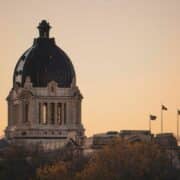Australia’s international education exports grew by 22% in 2017
What do iron ore, coal, and Australia’s international education sector have in common? They’re the top three exports for Australia, with recent international trade data showing that the international education sector contributed AUS$32.2 billion (US$24.7 billion) dollars to the economy in 2017. The latest data from the Australian Bureau of Statistics (ABS) shows that the contribution of international education activity to the Australian economy rose 22% from 2016 to 2017, the most significant annual growth since 2008. Students’ personal expenses (tuition and living costs) made up the bulk of that spending, accounting for AUS$31.6 billion of the overall contribution of AUS$32.2 billion. Australia makes the top three on another measure, too: it is currently the third most popular study abroad destination in the world, after only the US and the UK. It jumps to second place in terms of the destination most favoured by Indian and Chinese students.
Economic contribution growing faster than enrolments
The impressive 22% increase in the international education sector’s economic value comes on the heels of another major growth milestone: in 2017, the number of foreign students enrolled in Australia grew by 13% over the year before, reaching a high of 624,000. That the sector’s economic impact is growing even more quickly than its enrolments suggests that foreign students are spending more now than in the past to study in Australia, whether in terms of tuition, living costs, or both. QS Top Universities notes that students need “AUS$19,830 each year for living costs,” an amount QS derives from student visa financial requirements for foreign students coming to Australia. As for tuition, educational consulting company StudyMove.com recently analysed more than 4,500 programmes from Australia’s 39 universities and found that,
“Only three Australian universities maintained similar fees this year. The majority of the universities increased fees in 2017 by between 4% and 6% …. On average across all universities, the annual international tuition fee for international students is 4.9% more in 2017 compared with 2016 fees.”
StudyMove.com reports that “the annual international tuition fee in 2017 [for undergraduate students] is AUS$29,235 compared with AUS$28,064 in 2016 and AUS$26,258 in 2015.” Graduate students, meanwhile, can expect to pay anywhere from AUS$20,000 to AUS$37,000 in annual tuition for a master’s degree and AUS$14,000 to AUS$37,000 for a doctoral degree, according to the government-run site Study in Australia.
Quality, networking, and job prospects draw students
Any such increases in costs of study are obviously not deterring international students from enrolling in ever greater numbers to Australia’s schools, colleges, and universities. Across the board, (i.e., higher education, VET, ELICOS, schools, and non-award programmes) enrolments grew in 2017 over 2016, with higher education and VET growing the most, 15% and 16% respectively. Acting Chief Executive of Universities Australia, Catriona Jackson, notes that,
“International students are drawn to Australia because they know they’ll get a world-class education, global alumni networks, a great student experience and lifelong friendships with our country.”
Ms Jackson emphasised the need to keep quality standards high at the same time as international enrolments increase, saying that, “It’s in the interests of all Australians that this continues. That’s why we need to keep investing in the quality that brings students to our shores.” In 2017, during his ministerial address at the Australian International Education Conference in Hobart, Minister for Education and Training Simon Birmingham cited research showing that 76% Australia’s international students chose the country as their first preference destination, compared to 71% in 2014 or 70% in 2012. He called it “a pleasing indication that as the number of students have grown, so too has the fact that Australia has been their first choice destination.”
Australia’s reputation as a safe destination also matters
Minister Birmingham also referenced a 2016 survey of more than 65,000 international students studying in Australia that found that 93% rated safety as a key reason for choosing Australia as a study destination. In 2016, the Hobsons International Student Survey ranked Australia as the safest and most welcoming country for international students. Close to 200 nationalities are represented in Australia’s international student population. Of the total, more than half (53%) of all international students in the country come from five sending markets: China (30%), India (11%), Nepal (5%), Malaysia (4%), and Brazil (4%). For additional background, please see:
















